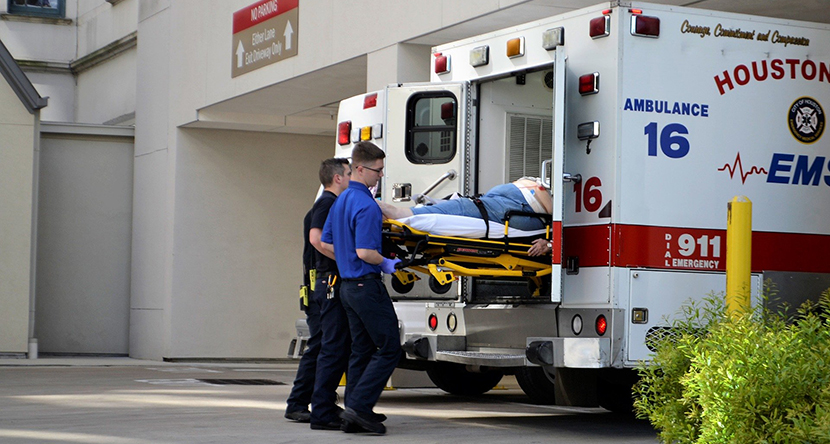When disaster strikes, EMTs and other first responders need to jump into action immediately. Emergency response personnel need to be ready to act swiftly in the face of any disaster, especially situations they’ve never encountered.
Education through textbooks and testing is a good way for emergency personnel to gain knowledge, but the most effective way to prepare first responders for a mass disaster is simulation-based learning. Simulation training puts people in realistic scenarios using real equipment and trains them in a hands-on, immersive environment. People retain more of what they learn when engaged in a hands-on environment.
Emergency response teams will benefit from simulation training, no matter how long they have been in the field.
Running a mass disaster simulation will help save lives
By running a mass disaster simulation, you’re providing top-notch training that will undoubtedly save lives. While simulation training in the medical field is priceless, it’s challenging to manage.
To prepare medical personnel to the highest degree possible for a mass disaster, here’s what you need to know about managing a simulation.
Video record your simulation training
Video recording your mass disaster simulation makes it possible to provide better training to everyone in your organization. The biggest benefit is being able to review the video with participating team members, pause the video, and discuss important points. For instance, say an EMT makes a major mistake during the simulation training drills. You can show them where the mistake was made and provide immediate feedback on what should have been done. In a classroom setting, everyone else will benefit from the same feedback, even if they didn’t participate in that particular drill.
Video recordings also make it possible to train people prior to their own hands-on training. For example, you can show the recordings to new team members during their training and point out the details of what went right and what went wrong.
Hopefully, all your team members will participate in a hands-on disaster simulation at some point, but until then, a video recording makes fantastic training material.
Choose the right disaster to simulate
Medical personnel require training for challenging and even unlikely scenarios. However, you must choose your scenario wisely. Conducting a mass disaster simulation requires significant time, personnel, and financial resources. It is wise to train for the scenario most likely to occur in the near future.
If you’re not sure what’s involved, start by reviewing this guide published by the Pan American Health Organization. This document provides detailed guidelines for organizing, developing, and evaluating mass disaster simulations in the health sector.
Train response teams to work around broken electronic systems
Responses within the first 72 hours after a disaster are critical to save as many lives as possible. In a major disaster, injuries are widespread and medical systems will be overloaded. Medical personnel can’t rely solely on technology in a disaster and need to be trained to work effectively around dysfunctional systems.
This is one area where video simulation training will be exceptionally helpful. With a video, you can show personnel exactly what to do when electronic systems fail and communication has to be taken offline.
Response teams need to know their priorities
First responders have several responsibilities, many of which are priorities. Sometimes they’ll be faced with multiple priorities at once. For example, saving lives is a first priority, but they also have a duty to contain the emergency.
When faced with multiple priorities at once, first responders need to make a decision and act fast. In some situations, saving a life will be priority over focusing on containment. However, in some situations, containing the emergency might take precedence over tending to a person with life-threatening injuries.
Running a mass disaster simulation will help response personnel train themselves to make these difficult split-second decisions. When other personnel review the simulation video, they’ll have a better understanding of why specific decisions were made.
Train personnel to reject or abandon unnecessary donations
Managing donations might not seem relevant to training for a mass disaster, but it’s more important than you think. Often, well-meaning people from around the world donate unnecessary items that clog up distribution channels. When unnecessary donations (like stuffed animals, toys, and blankets) fill the distribution channels, it’s difficult to provide emergency medical supplies to people in serious need.
Manage bottlenecks caused by damaged infrastructure
In a real-world disaster, bottlenecks can cause serious disruption to emergency response efforts. Damaged infrastructure is the biggest cause for bottlenecks and can stifle transportation, communication, and needs assessments.
Set up several different scenarios to simulate the kind of bottlenecks response personnel can expect to encounter. These situations are important to capture on video to use as training.
Be prepared to find holes in your existing preparedness plan
Mass disaster simulations are designed to train response personnel and to test existing preparedness plans.
When you run your existing preparedness plan through a simulation, you’ll quickly uncover holes and errors you couldn’t see theoretically on paper. Be prepared to find plenty of errors to resolve.
You’ll need a system for documenting anything that doesn’t work. Once you have a solution, you’ll need to amend your documented protocols and retrain your teams. You may want to bring in an expert to help facilitate this process.
Improve your simulation training with VALT
Having a disaster simulation on video is an invaluable training tool for your organization. If you’re ready to launch a mass disaster simulation, consider using video technology to capture the event.
Our Video Audio Learning Tool (VALT) provides the technology necessary to record a simulation from many different angles without relying on bulky equipment. For instance, with our mobile app, Beam, you can use any Apple device to record securely in the field. Recording from iPhones, iPods, and iPads means your videographers can set up stationary tripods or move around and follow the action.
VALT was created to improve outcomes in disaster situations. If you’re ready to improve the way you train emergency response personnel, learn more about VALT by requesting a demo.







